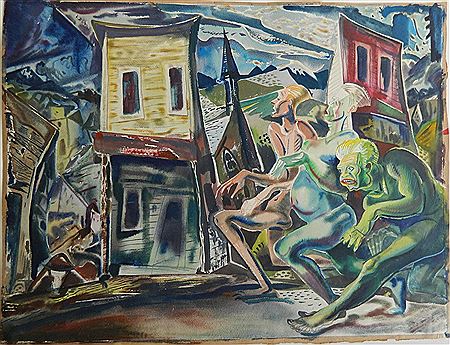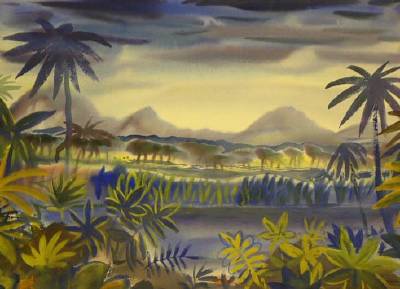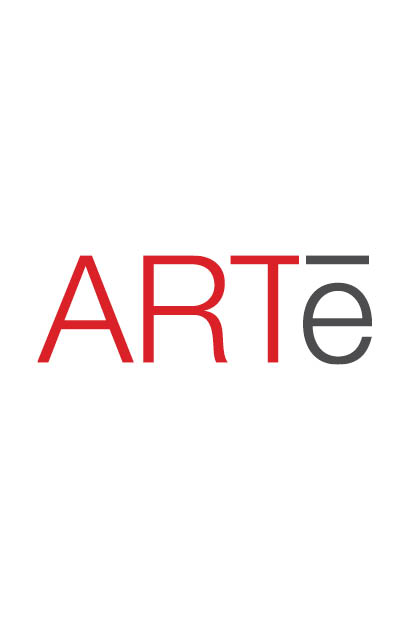Paul Travis, American, 1891-1975
African Scene • Watercolor 21-3/8" x 28-3/4"
Marjorie Penfield Travis’ grandfather left his Ohio farm in 1847 to visit New York, returning four years later to find his wife remarried. So, when Marjorie’s husband, Paul Travis, wanted to hike across Africa, she wasn’t taking any chances and tagged along. Traveling from Capetown, South Africa, to Cairo, Egypt, the couple collected African art and artifacts, learned to skin wild game, painted scenery and absorbed the culture. For people raised on rural Ohio farms, the journey was a watershed in their lives. It had a similar effect on the cultural life of Cleveland, their adopted home.
In 1929 they returned to Cleveland and Paul reclaimed his teaching position at his college alma mater, the Cleveland Institute of Art. Marjorie raised three children in their Cleveland Heights home. But, the exotic scenery, animals and people of Africa were never far away, fueling Paul’s rise among the Cleveland School artists, a group at the forefront of the modern art movement in the early to mid-1900s. As he developed a fresh, modern style he inched closer to the primitive, colorful art he’d seen in Africa.
INTERESTING STORIES FROM OUR SPONSORS

Paul Bough Travis only left his native Ohio twice. First to fight in France during WWI, staying an extra year to teach art in French schools. His second major trip was Africa, sponsored by a group of Cleveland African-Americans interested in African art. The art and artifacts Paul and Majorie brought back still remain in the collections of the Cleveland Museum of Art and the Cleveland Museum of Natural History. Africa also became the life-long subject matter of Travis’ art, including the award-winning paintings he exhibited at 52 Annual May Shows where he became one of the most decorated participants.
The Cleveland Plain Dealer once called Travis’s work “some of the most historically significant art this city has ever produced.”
Art, Africa and Teaching defined Paul Travis. His curiosity took the Ohio farm boy from Yellow Paint Creek to Victoria Falls and back again. He taught at the Cleveland Institute of Art for 37 years. But, he is most remembered for bringing Africa to America, leaving large chunks of the continent in Cleveland and Canton.
Come to the Canton Museum of Art and stand beneath African skies.
Canton Museum of Art Permanent Collection • Purchased by the Canton Museum of Art, 2007.3
4 Ways to Sound Smart When Viewing at The Canton Museum of Art
1.
“As an Ohio farm boy, he dreamed of being famed explorer, Sir Henry Stanley. In 1928 he roughly followed Stanley’s trail across Africa.”
2.
“Much of the art and artifacts he brought back from Africa are still in the collections of the Cleveland Museum of Art and the Cleveland Natural History Museum.”
3.
“His fascination with Africa led him to a close relationship with Cleveland’s African-American community. He even served on the boards of Karamu House and the Cleveland Council on Human Relations.”
4.
“Turns out he was a pretty good writer as well, and has a number of short stories in archives at the Smithsonian in Washington D.C.”
Paul Travis Timeline. Scroll over images to see timeline.

















